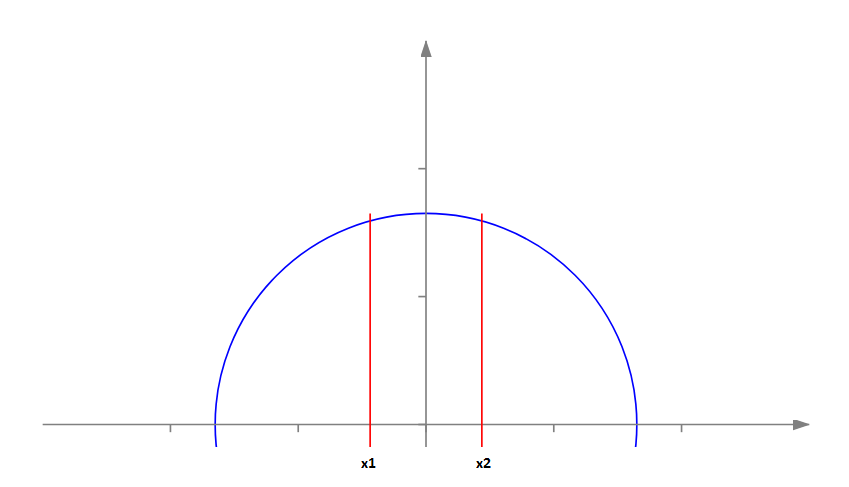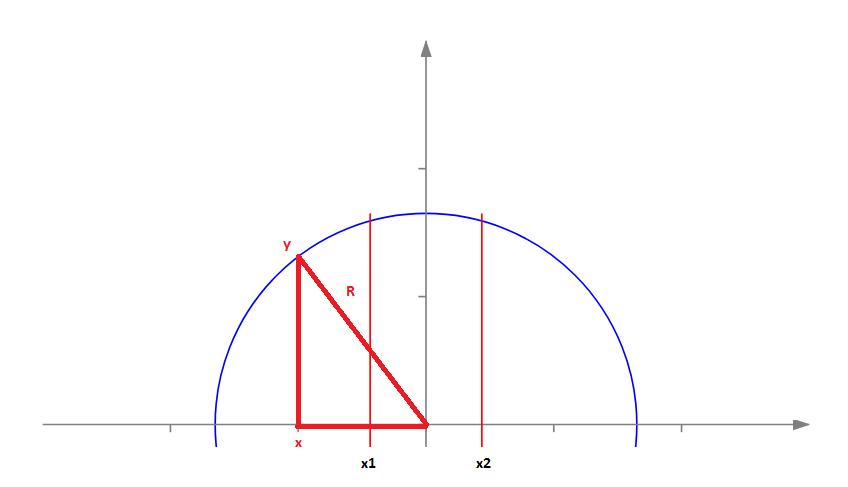Cutting a circle
Two ways to cut a circle into equal parts : sector cuts and parallel cuts.
This content is licensed under Creative Commons Attribution/Share-Alike License 3.0 (Unported). That means you may freely redistribute or modify this content under the same license conditions and must attribute the original author by placing a hyperlink from your site to this work https://planetcalc.com/8943/. Also, please do not modify any references to the original work (if any) contained in this content.
Below you can find two calculators which calculate how to cut a circle into equal parts - traditional and non-traditional way. By the traditional way, I assume cutting a circle into sectors, just like you usually cut a pie or pizza. And by the non-traditional way, I assume cutting a circle into equal vertical slices with parallel lines or with parallel chords, if you like. Both calculators present a drawing that illustrates the result. And you can find all formulas and math in the article below the calculators.
Cutting a Circle into Sectors
Ok, you need to cut a circle into several sectors (even non-even numbers). To do this, you need to find the parameters of a sector. It is a straightforward task:
- Find the angle of a sector in radians by dividing 2π (representing 360 degrees in radians) by a number of sectors.
- Find the length of an arc of a sector by multiplying a radius by an angle of a sector in radians.
- Find the length of a chord of a sector by using Law of cosines (a chord is the base of the isosceles triangle, with two radiuses as legs and sector angle as apex angle).
This completely defines all N equal sectors.
Cutting a Circle with Parallel Cuts
This way is more interesting. For simplicity, I will consider half of a circle since it is symmetrical.

Let's slice it with vertical slices. In this case, we need to find the x-coordinates of parallel chords, which should split our circle into equal-area parts. (see points x1 and x2 on the picture above). Let's derive the general formula for an area of a left slice.
Our half-circle can be thought of as a function y=f(x), where x - is the coordinate along the abscissa axis, and y is the function equal to the value of the corresponding half-circle point.

Using the Pythagorean theorem, the y function is
To find an area of a left slice, you need to integrate this function from -R to x. The antiderivative of our function is :
We need to find the value of constant. Obviously, at the point where x equals -R area should be zero. If we plug -R instead of x into the formula above, we get
, hence
Our final integral is
Now how do we find x of the first cut? We know we area we should get - Nth part of the total area (note the half-circle)
Thus we can equate
Which gives us
This is a transcendental equation, and we need to use numerical methods to solve it, for example, Bisection method or Newton's method. Here I used Newton's method.
The next points of cut can be found with the same approach. We need to cut two times more for second point , three times more for third point
and so on.
Then we can find all other parameters, like chord length, using the point coordinates.
Comments